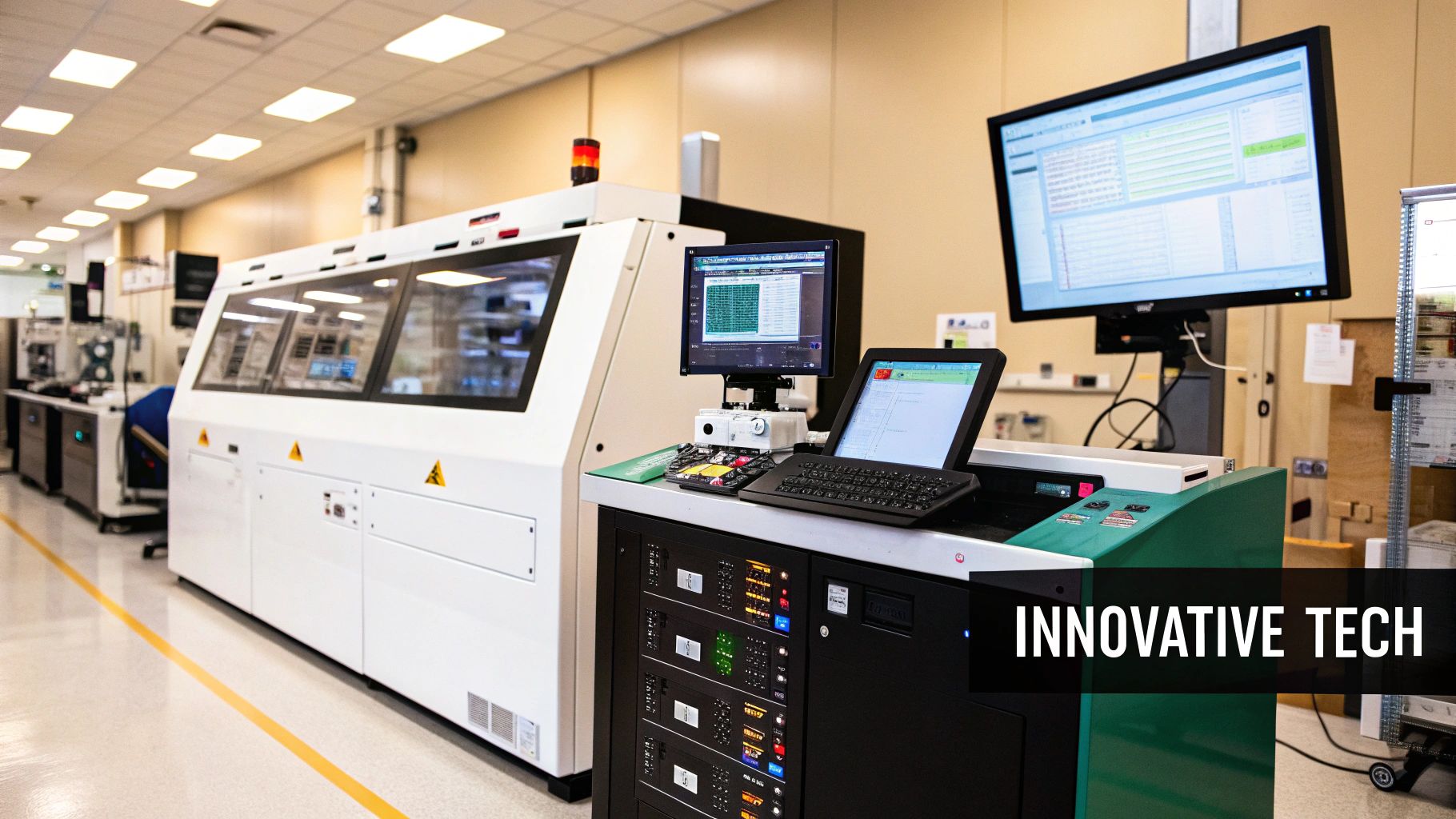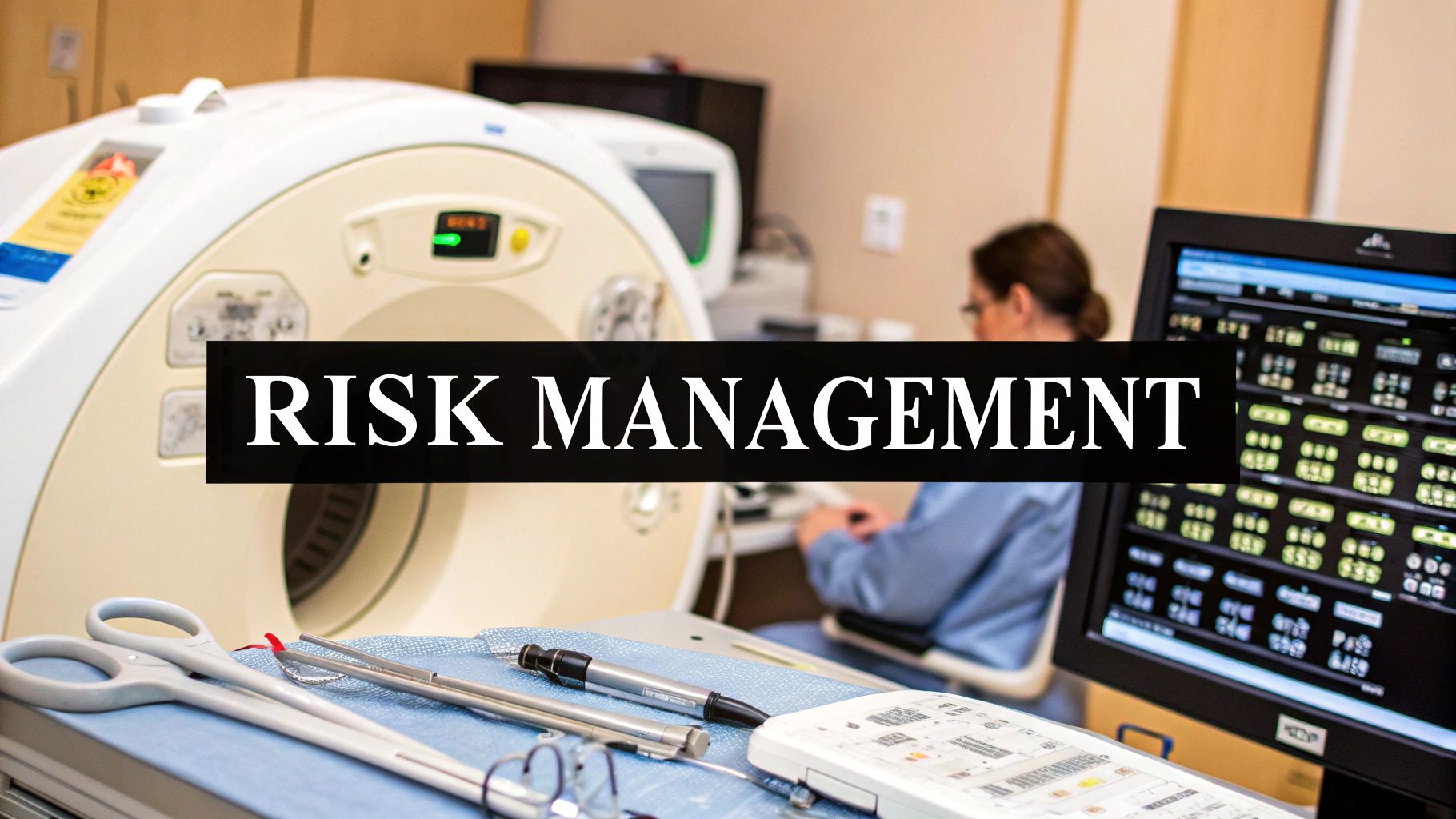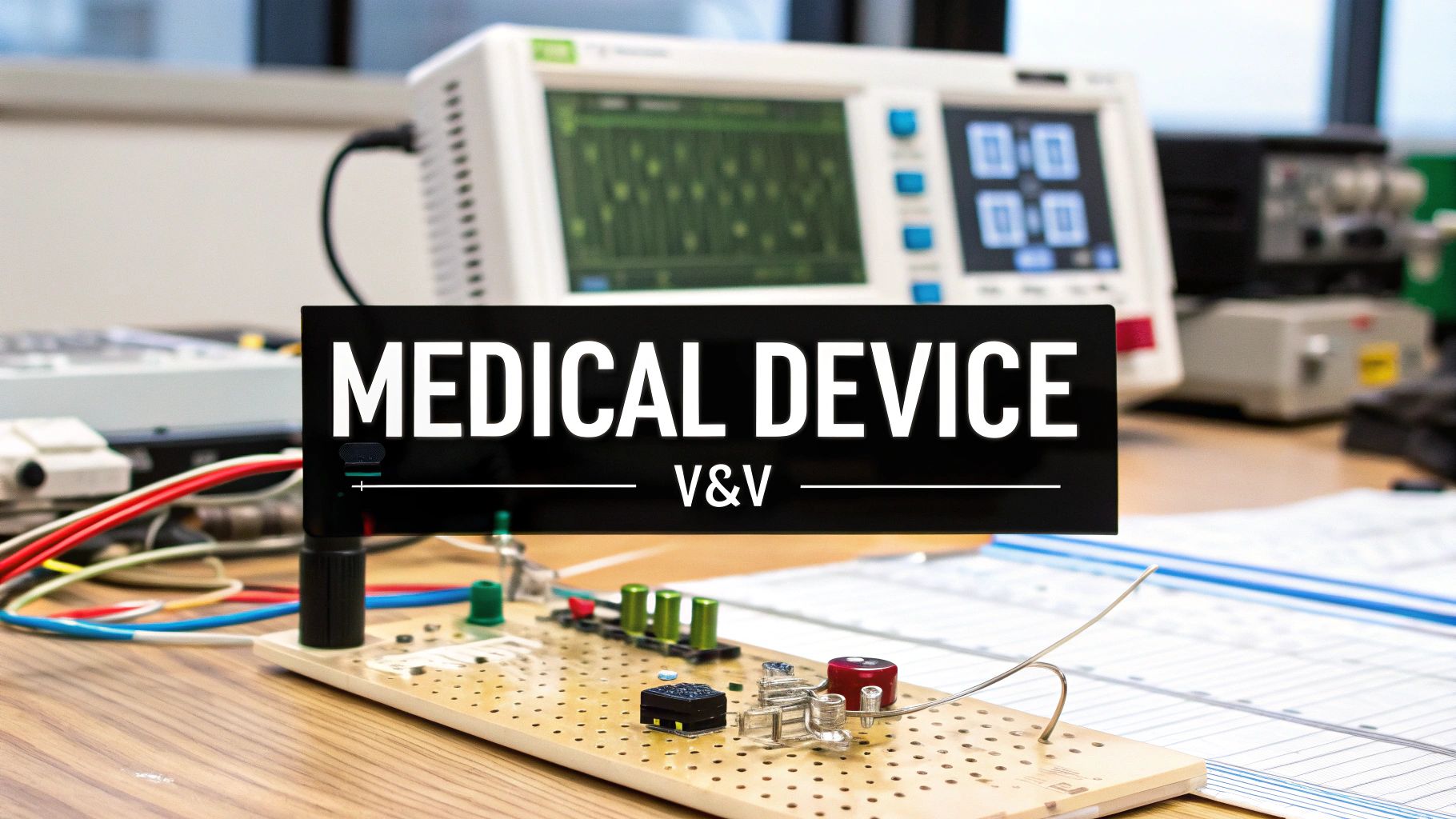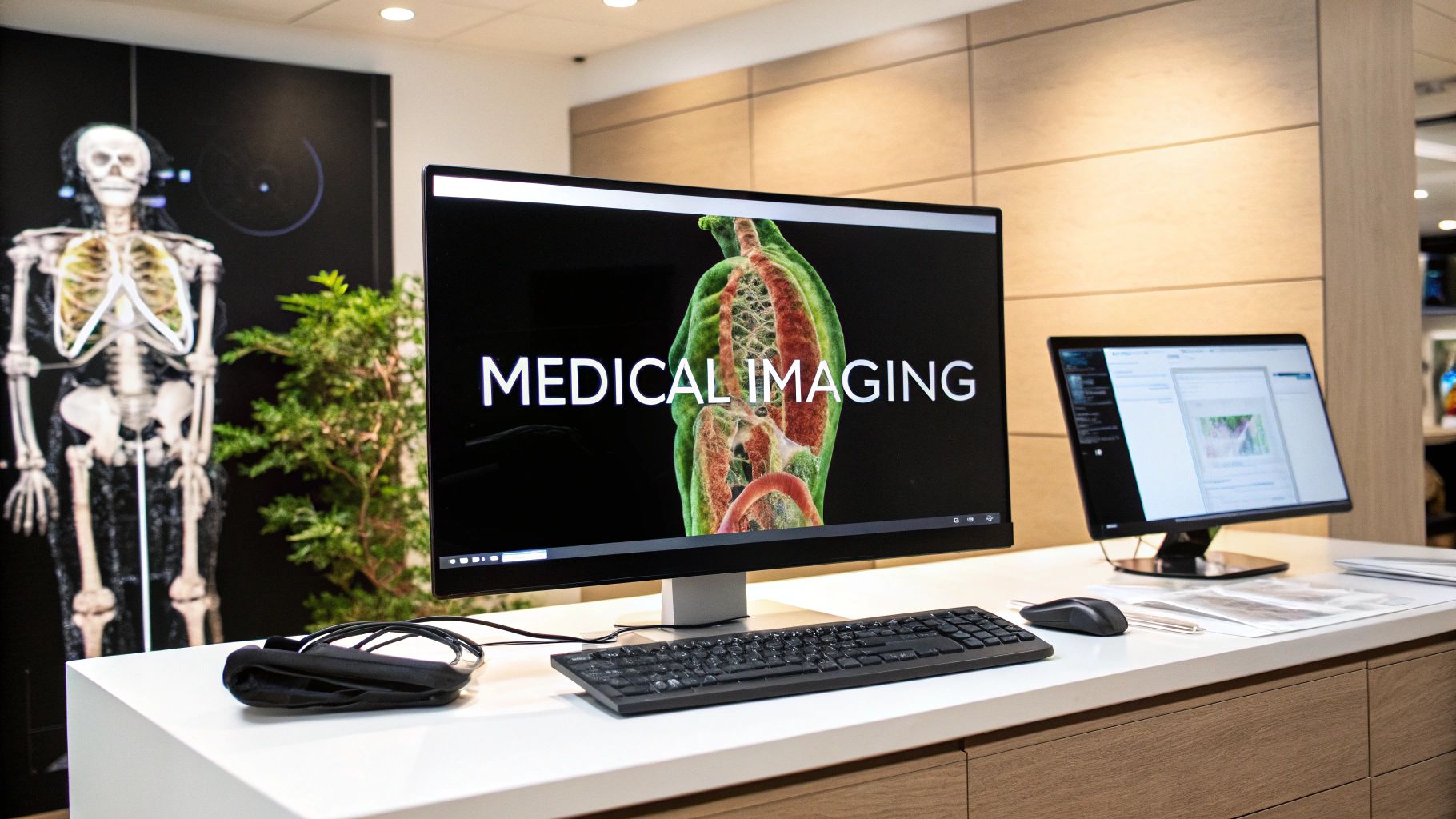The AI Revolution in Medical Diagnosis: How CAD Works

Computer Aided Diagnosis (CAD) is making a significant impact on medical diagnostics. It uses artificial intelligence to analyze medical images and patient data, providing doctors with a powerful new tool. CAD acts as a highly skilled assistant, pre-screening images and highlighting potential problem areas for doctors to review.
Pattern Recognition and Anomaly Detection
At the core of CAD systems are complex algorithms, often using machine learning. These algorithms are trained on massive datasets of medical images, learning to recognize patterns associated with different diseases. For instance, a CAD system for breast cancer screening can be trained on thousands of mammograms. This allows it to identify subtle indicators, such as microcalcifications, that might be missed by the human eye. This ability to detect even tiny anomalies makes CAD a valuable tool for early disease detection.
Integration into Clinical Workflows
CAD systems fit seamlessly into current clinical workflows. After a patient's medical imaging exam, the images are entered into the CAD system. The system analyzes the images, marking any suspicious areas. These marked areas, along with the original images, are then reviewed by a radiologist or specialist. This combined approach of human expertise and AI precision leads to more accurate and efficient diagnoses.
The global market for computer-aided detection (CAD) is growing rapidly, fueled by factors like the increasing incidence of cancer and wider adoption in areas such as breast cancer screening. Valued at $818.5 million in 2022, this market is projected to grow at a 5.9% annual rate through 2030. By 2016, CAD was already being used in about 92% of U.S. screening mammograms. For more detailed statistics, see Grand View Research.
Detection vs. Diagnosis: The Important Distinction
It's important to understand the key difference between detection and diagnosis. CAD focuses primarily on detection – finding potential problems in medical images. The final diagnosis, however, is still the responsibility of the medical professional. They consider the CAD findings along with other patient information, such as medical history and symptoms, to reach a final diagnosis. This reinforces the crucial role of human judgment in the diagnostic process. CAD assists and enhances a doctor's expertise, not replaces it.
The following table summarizes the key differences between traditional and computer-aided diagnosis.
Computer Aided Diagnosis vs. Traditional Diagnosis
A comparison of traditional diagnostic approaches versus computer-aided diagnosis across key performance metrics
| Diagnostic Aspect | Traditional Approach | Computer Aided Diagnosis | Impact on Patient Care |
|---|---|---|---|
| Image Analysis | Primarily visual inspection by radiologists | Algorithmic analysis of images, highlighting potential anomalies | Increased sensitivity in detecting subtle abnormalities |
| Speed | Can be time-consuming, particularly with complex cases | Rapid image processing and analysis | Faster turnaround time for results |
| Accuracy | Subject to human error and inter-observer variability | More consistent and objective analysis | Reduced risk of missed diagnoses or misinterpretations |
| Efficiency | Can be resource-intensive, requiring significant expertise | Automates aspects of image analysis, freeing up radiologists' time | Allows radiologists to focus on complex cases and patient interaction |
| Cost | Can be expensive, depending on the complexity of the imaging and analysis required | Potential for cost savings through increased efficiency | More cost-effective diagnosis and treatment |
This table highlights the advantages of CAD in enhancing speed, accuracy, and efficiency in medical diagnostics, ultimately leading to better patient care. While traditional methods rely heavily on human expertise, which is still crucial, incorporating AI through CAD complements this expertise, leading to more comprehensive and timely diagnoses.
The CAD Market Explosion: Where Investment Is Flowing

The healthcare industry is seeing a significant rise in investment in Computer Aided Diagnosis (CAD), changing how medical diagnostics are approached. This investment growth is fueled by the potential for improved accuracy, early disease detection, and better patient outcomes. Let's explore why investors are increasingly drawn to CAD, making it a rapidly expanding sector in healthcare.
Key Drivers of Investment
Several factors contribute to this rapid growth. First, the demand for accurate diagnostic tools is on the rise. Human error in interpreting medical images is a genuine concern, and CAD offers a solution by providing objective, data-driven analyses.
The increasing prevalence of chronic diseases, especially cancer, further emphasizes the need for early detection. CAD excels in this area, often detecting subtle anomalies that might be missed by the human eye.
Growing acceptance of AI in healthcare also plays a significant role. As clinicians and patients become more comfortable with AI's potential to enhance healthcare, they are more willing to adopt innovative solutions like CAD. This increased acceptance leads to wider implementation of CAD systems and, subsequently, greater investment.
According to Zion Market Research, the CAD market reached $871.55 million in 2023. They project a 7.3% CAGR through 2032, reaching $1.64 billion. This growth is driven largely by the need for accurate diagnostic tools to reduce observational errors, especially in North America.
Regional Growth and Adoption
While CAD adoption is increasing globally, some regions are leading the charge. North America, with its advanced healthcare infrastructure and rapid technological advancements, holds a substantial market share.
However, other regions are quickly catching up. The Asia Pacific region, for instance, is experiencing considerable growth due to factors like rising medical tourism and the availability of more affordable CAD solutions.
The table below provides a more detailed breakdown of regional market growth and key contributing factors.
To better understand the regional dynamics of the CAD market, let's examine the following table:
CAD Market Growth by Region (2022-2032)
Statistical breakdown of regional market shares and growth rates for Computer Aided Diagnosis technology
| Region | Market Share (%) | CAGR (%) | Key Growth Factors |
|---|---|---|---|
| North America | 45 | 8.1 | Advanced healthcare infrastructure, high technology adoption rate, increasing prevalence of chronic diseases |
| Europe | 25 | 6.5 | Growing geriatric population, government initiatives promoting digital health, rising investments in healthcare IT |
| Asia Pacific | 18 | 9.2 | Increasing medical tourism, availability of cost-effective solutions, rising awareness about early diagnosis |
| Rest of the World | 12 | 5.9 | Improving healthcare infrastructure, growing demand for better diagnostic tools, increasing government funding for healthcare |
As this table illustrates, North America maintains the largest market share, but the Asia Pacific region exhibits the highest CAGR, indicating significant growth potential. This data highlights the global impact of CAD technology.
The Economics of CAD Implementation
Beyond the market figures, the economic justification for CAD adoption is compelling. Early disease detection and improved diagnostic efficiency translate into substantial cost savings for healthcare systems.
By reducing false positives and negatives, CAD minimizes unnecessary follow-up procedures and treatments. This results in considerable financial benefits.
A Financial Case for Healthcare Administrators
For healthcare administrators, the financial benefits of CAD are becoming increasingly clear. While there are initial implementation costs, the long-term benefits of improved diagnostic accuracy, reduced errors, and increased efficiency often offset these initial investments. This positive cost-benefit analysis supports the integration of CAD into diverse healthcare settings, from large hospitals to smaller clinics. CAD's capacity to improve patient outcomes and offer potential cost savings makes it a worthwhile investment for healthcare facilities seeking to enhance both clinical performance and financial stability.
Cancer Detection Breakthrough: CAD in Oncology
Computer Aided Diagnosis (CAD) is changing the way we approach cancer treatment. This technology helps medical professionals detect cancer earlier, sometimes even before tumors are visible with conventional methods. This improved detection is critical for effective treatment and better patient outcomes. We'll explore how CAD is impacting oncology, focusing on early detection, improved diagnostic accuracy, and its transformative effect on patient care.
CAD's Impact on Early Cancer Detection
CAD systems are enhancing early cancer detection for a variety of cancers, including breast, lung, prostate, and colorectal cancers. These systems use advanced algorithms to analyze medical images such as mammograms, CT scans, and MRIs, identifying subtle anomalies often missed by human eyes. This "second look" significantly increases the likelihood of catching cancer in its earliest stages.
For instance, in breast cancer screening, CAD can pinpoint microcalcifications or small masses before they become clinically apparent. This early detection is vital for successful treatment, improving patient survival rates and overall health outcomes.
Enhanced Diagnostic Accuracy and Patient Outcomes
CAD has a profound impact on diagnostic accuracy. By aiding radiologists in identifying and classifying suspicious areas, CAD systems lessen the chances of missed diagnoses or misinterpretations. This increased accuracy benefits individual patients and boosts the efficiency of the healthcare system as a whole.
CAD can help differentiate between benign and malignant findings, reducing the need for unnecessary biopsies and follow-up procedures. This results in fewer invasive procedures, decreased patient anxiety, and a more efficient diagnostic process. Catching cancer at an earlier, more treatable stage also leads to better patient outcomes, including longer survival and improved quality of life.
Technical Challenges and Future Directions
While CAD offers substantial benefits, its application in oncology presents unique challenges. One key challenge is distinguishing between benign and malignant lesions. Researchers are continuously working to improve algorithms and enhance their accuracy in making these vital distinctions.
Another focus area is developing CAD systems that can integrate various medical data, such as imaging, genomics, and patient history, creating a more comprehensive diagnostic profile. This integrated approach aims to further enhance the accuracy and reliability of CAD in cancer detection and diagnosis.
The continued development of CAD technology offers great promise for the future of cancer care. It paves the way for even earlier detection, more personalized treatment plans, and ultimately, improved patient outcomes. PYCAD, for example, offers AI-powered services supporting these advanced applications, from data handling and model training to deployment, furthering the development of sophisticated CAD systems for oncology.
Beyond Cancer: How CAD Is Transforming All Medicine

While Computer Aided Diagnosis (CAD) has significantly improved cancer detection and treatment, its use is expanding across various medical specialties. This evolution in healthcare improves the detection and diagnosis of a wide range of conditions, from heart disease to neurological disorders. Let's explore how CAD systems are making a difference.
Cardiology: Detecting Coronary Blockages
CAD systems are proving essential in cardiology, especially for identifying coronary artery blockages. By analyzing images from angiograms and other cardiac imaging techniques, these systems can pinpoint areas of narrowing or blockage in the coronary arteries. This helps cardiologists assess the severity of the issue, allowing for timely interventions such as angioplasty or bypass surgery. Early detection reduces the risk of heart attacks and other serious cardiovascular problems.
Neurology: Identifying Early Dementia Signs
Neurology is another area benefiting from CAD, particularly in the early detection of dementia. Analyzing brain scans like MRIs, CAD systems can identify subtle structural changes often before clinical symptoms appear. For example, they can detect reductions in hippocampal volume, a key indicator of Alzheimer's disease. This early detection enables timely interventions, potentially slowing disease progression and enhancing patient outcomes.
Orthopedics: Finding Subtle Fractures
In orthopedics, CAD systems are increasingly useful for detecting subtle fractures that might be missed by the human eye. The systems analyze X-rays and other imaging studies to identify these often hard-to-spot fractures, particularly in complex injuries or those involving small bones. Accurate and early fracture detection leads to appropriate treatment and faster healing.
Ophthalmology: Detecting Vision-Threatening Conditions
Ophthalmology is utilizing CAD systems to detect serious conditions like diabetic retinopathy and macular degeneration. By analyzing retinal images, these systems identify early signs of damage or disease. Early detection is crucial for timely interventions, such as laser therapy or medication, which can preserve vision and prevent blindness.
Deep Learning and the Future of CAD
Advancements in deep learning are significantly enhancing the capabilities of CAD systems. These systems can analyze complex medical data, improving diagnostic accuracy and detecting even subtle anomalies. This potential to transform standard care across various specialties is significant. Moreover, CAD can democratize access to expert-level diagnostics, especially in underserved areas with limited access to specialists. This expands the reach of quality healthcare, potentially improving global health outcomes. PYCAD is a leader in this area, offering innovative AI-powered solutions designed for healthcare professionals and institutions.
Inside the Algorithms: The Tech Powering Diagnostic AI
Computer Aided Diagnosis (CAD) relies on a fascinating array of technologies. These algorithms are constantly evolving, pushing the boundaries of medical image analysis and data interpretation. This section explores the core components powering these diagnostic AI systems and how they contribute to improved healthcare.
Convolutional Neural Networks: The Image Recognition Experts
Convolutional Neural Networks (CNNs) are the backbone of image recognition in CAD systems. Think of a CNN as a highly trained specialist, carefully examining medical images for specific indicators. These networks learn to recognize subtle patterns associated with various diseases by training on massive datasets of medical images. For example, when analyzing a chest X-ray, a CNN can identify subtle variations in lung tissue that might suggest the presence of a tumor, even if barely perceptible to the human eye.
Transformer Models: Contextualizing Medical Data
While CNNs excel at analyzing images, Transformer models offer a broader perspective for CAD. These models are adept at understanding the relationships between different pieces of information. This means a Transformer model can consider multiple medical images from a patient’s history, combined with lab results and clinical notes, to provide a more comprehensive and contextualized diagnosis. This multifaceted approach helps create a more accurate and complete picture of a patient’s health.
Multimodal Integration: Combining Data for a Fuller Picture
Multimodal integration elevates this contextualization further. Imagine viewing a patient's MRI, CT scan, and PET scan simultaneously, overlaid with their clinical data. Multimodal integration in CAD systems achieves this. By combining data from various sources, these systems create a more complete diagnostic profile. For example, when diagnosing a neurological condition, the system can combine brain imaging data with a patient's genetic information and medical history, offering a deeper understanding of the disease’s progression.
Explainable AI: Building Trust and Transparency
A crucial aspect of CAD is the need for transparency. Clinicians need to understand how the AI reached its conclusions. This is where explainable AI (XAI) becomes essential. XAI techniques provide insights into the decision-making process of the algorithms. Instead of simply presenting a result, an XAI-powered CAD system might highlight specific areas of an image it considered significant, along with the reasoning behind its assessment. This transparency builds trust and enables clinicians to validate the AI's findings, ensuring confident medical decisions.
Tackling Technical Challenges: The Path Forward
Developing effective CAD systems presents ongoing challenges. Ensuring annotation efficiency, for instance, is critical. Training AI models requires extensive, accurately labeled datasets. Efficient annotation processes are vital for creating these datasets without overburdening human annotators. Another significant challenge is model reliability across diverse patient populations. AI models must perform consistently across different demographics and health backgrounds. Researchers are actively working to improve these aspects of CAD technology, refining algorithms and enhancing data collection methods to develop more robust and equitable diagnostic tools. PYCAD is at the forefront of these advancements, providing solutions for improved annotation, model training, and deployment. These continued efforts will further strengthen the role of CAD in improving patient care.
Implementation Reality: Navigating Adoption Challenges

Integrating Computer Aided Diagnosis (CAD) systems into clinical settings offers significant opportunities but also presents unique complexities. While the benefits of CAD are substantial, healthcare facilities must carefully consider several practical aspects to ensure successful implementation. This includes navigating regulatory hurdles, integrating CAD into current workflows, and managing the human element of adopting new technology.
Regulatory Pathways and Compliance
Successfully implementing computer aided diagnosis starts with a thorough understanding of regulatory requirements. Different regions have distinct approval pathways and validation benchmarks. In the United States, for example, the Food and Drug Administration (FDA) plays a critical role. Understanding these regulations is paramount for ensuring compliance and smooth adoption. This necessitates meticulous documentation, rigorous testing, and strict adherence to established guidelines for medical device approval. Keeping up with evolving regulations is also vital for maintaining long-term compliance as technology progresses and new standards emerge.
Workflow Integration and Training
Integrating CAD into existing workflows demands careful planning. One major concern is the potential for workflow disruption during the transition. Effective training programs can mitigate this risk. Educating medical staff on the new system is essential. This training not only provides the necessary technical skills but also addresses any potential resistance to new technology. By highlighting the system's advantages and demonstrating its practical application in daily routines, staff can feel more comfortable with the change.
Infrastructure and Interoperability
Sufficient infrastructure is crucial for successful CAD implementation. CAD systems typically require considerable computing power and storage capacity. Assessing the current infrastructure and planning any necessary upgrades is essential. Interoperability is another key factor. Ensuring seamless communication between the CAD system and existing hospital systems, such as electronic health records and Picture Archiving and Communication Systems (PACS), is vital. This avoids creating data silos and ensures efficient data flow, preventing potential delays or errors during diagnosis.
Evolving Guidelines and Reimbursement
Medical societies are continuously updating their guidelines to incorporate computer aided diagnosis. This evolution provides a framework for best practices and standards of care. The reimbursement landscape is also changing to support wider CAD adoption. As payers recognize CAD's value in enhancing diagnostic accuracy and efficiency, they are progressively offering reimbursement for CAD-assisted procedures. This positive feedback loop encourages further adoption and fuels technological advancement.
Managing Change Resistance
Perhaps the most significant implementation challenge is managing resistance to change among staff. Introducing new technology can often be met with skepticism or apprehension. Addressing these concerns proactively through clear communication and ongoing support is vital. Highlighting the system’s benefits, providing comprehensive training, and involving staff in the implementation process can foster a sense of ownership and increase the chances of successful integration. Demonstrating how computer aided diagnosis enhances their work, rather than replacing it, can significantly ease the transition and build confidence in the technology.
Ready to experience the future of medical imaging? Visit PYCAD to discover our comprehensive AI solutions, tailored to your specific needs. We offer support for data handling, model training, deployment, and more. PYCAD empowers you to optimize your medical devices, enhance diagnostic accuracy, and improve patient outcomes.






